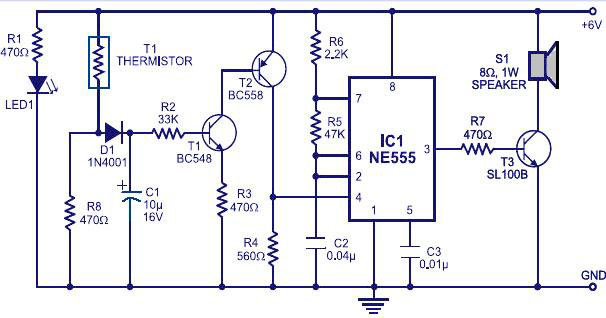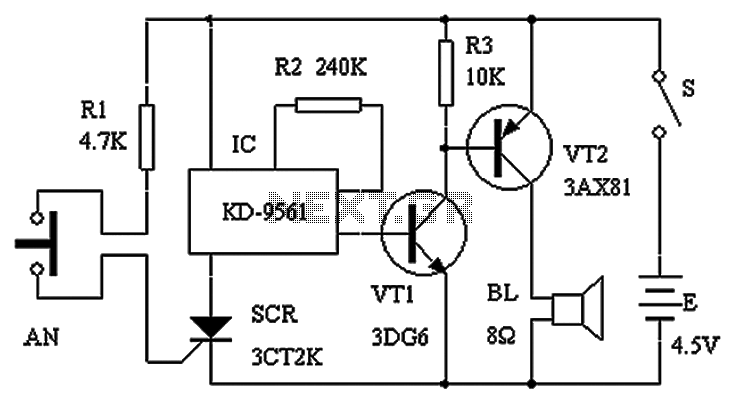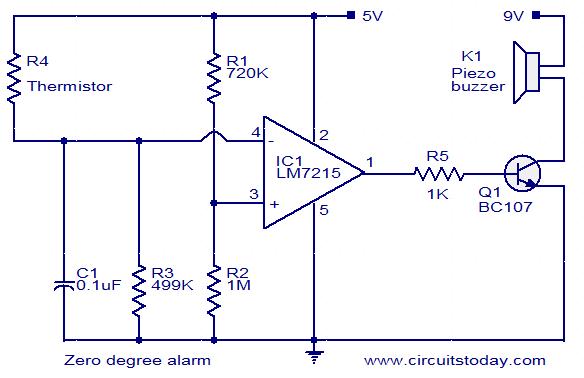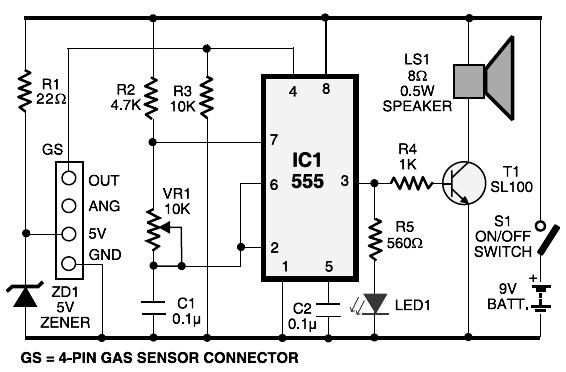
Doorknob touch alarm
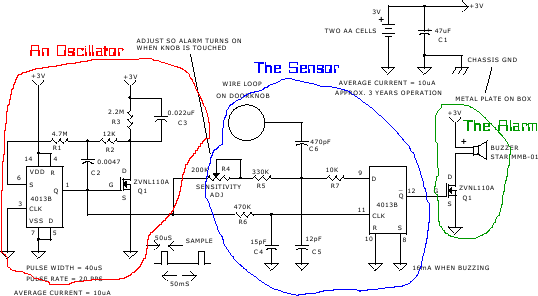
The project was originally intended as a present for my brothers dorm room, but a bad capacitor and the lack of a proper oscilloscope caused delays. It has not made it off the breadboard, and it probably will not until his next semester. The circuit contains a few basic elements, a flip-flop based oscillator, a set of delays, a flip-flop as a sensor, and the audible alarm.
The described project incorporates several fundamental electronic components that work together to create a functional circuit. At the core of the design is a flip-flop based oscillator, which generates a square wave output. This oscillator can be implemented using various types of flip-flops, such as the 74HC74 dual D-type flip-flop or a 555 timer configured in astable mode. The output frequency of the oscillator can be adjusted by changing the resistor and capacitor values in the timing network.
The circuit also includes a set of delays, which can be achieved using additional flip-flops or dedicated delay circuits like the CD4040 binary counter or a 74HC123 monostable multivibrator. These delays can be used to control the timing of various events in the circuit, such as when the audible alarm should be activated or deactivated.
A second flip-flop serves as a sensor, which can be triggered by external stimuli, such as a button press or a change in voltage level. This flip-flop can be configured to toggle its output state based on the input signal, thereby allowing for the detection of specific events or conditions.
Finally, an audible alarm, typically a piezo buzzer or speaker, is integrated into the circuit to provide an audible indication of the circuit's status. The alarm can be connected to the output of the flip-flop sensor, ensuring that it activates when the sensor detects a change. The alarm's volume and tone can be influenced by the design of the driver circuit, which may include transistors or operational amplifiers to amplify the signal.
In summary, this circuit design combines a flip-flop based oscillator, delay circuits, a sensor flip-flop, and an audible alarm to create an interactive electronic project suitable for a dorm room environment. The use of breadboarding allows for easy modifications and troubleshooting before finalizing the design on a printed circuit board (PCB).The project was originally intended as a present for my brothers dorm room, but a bad capacitor and the lack of a proper oscilloscope caused delays. It has not made it off the breadboard, and it probably will not until his next semester. The circuit contains a few basic elements, an flip-flop based oscillator, a set of delays, a flip-flop as a sensor, and the audible alarm.
🔗 External reference
The described project incorporates several fundamental electronic components that work together to create a functional circuit. At the core of the design is a flip-flop based oscillator, which generates a square wave output. This oscillator can be implemented using various types of flip-flops, such as the 74HC74 dual D-type flip-flop or a 555 timer configured in astable mode. The output frequency of the oscillator can be adjusted by changing the resistor and capacitor values in the timing network.
The circuit also includes a set of delays, which can be achieved using additional flip-flops or dedicated delay circuits like the CD4040 binary counter or a 74HC123 monostable multivibrator. These delays can be used to control the timing of various events in the circuit, such as when the audible alarm should be activated or deactivated.
A second flip-flop serves as a sensor, which can be triggered by external stimuli, such as a button press or a change in voltage level. This flip-flop can be configured to toggle its output state based on the input signal, thereby allowing for the detection of specific events or conditions.
Finally, an audible alarm, typically a piezo buzzer or speaker, is integrated into the circuit to provide an audible indication of the circuit's status. The alarm can be connected to the output of the flip-flop sensor, ensuring that it activates when the sensor detects a change. The alarm's volume and tone can be influenced by the design of the driver circuit, which may include transistors or operational amplifiers to amplify the signal.
In summary, this circuit design combines a flip-flop based oscillator, delay circuits, a sensor flip-flop, and an audible alarm to create an interactive electronic project suitable for a dorm room environment. The use of breadboarding allows for easy modifications and troubleshooting before finalizing the design on a printed circuit board (PCB).The project was originally intended as a present for my brothers dorm room, but a bad capacitor and the lack of a proper oscilloscope caused delays. It has not made it off the breadboard, and it probably will not until his next semester. The circuit contains a few basic elements, an flip-flop based oscillator, a set of delays, a flip-flop as a sensor, and the audible alarm.
🔗 External reference
